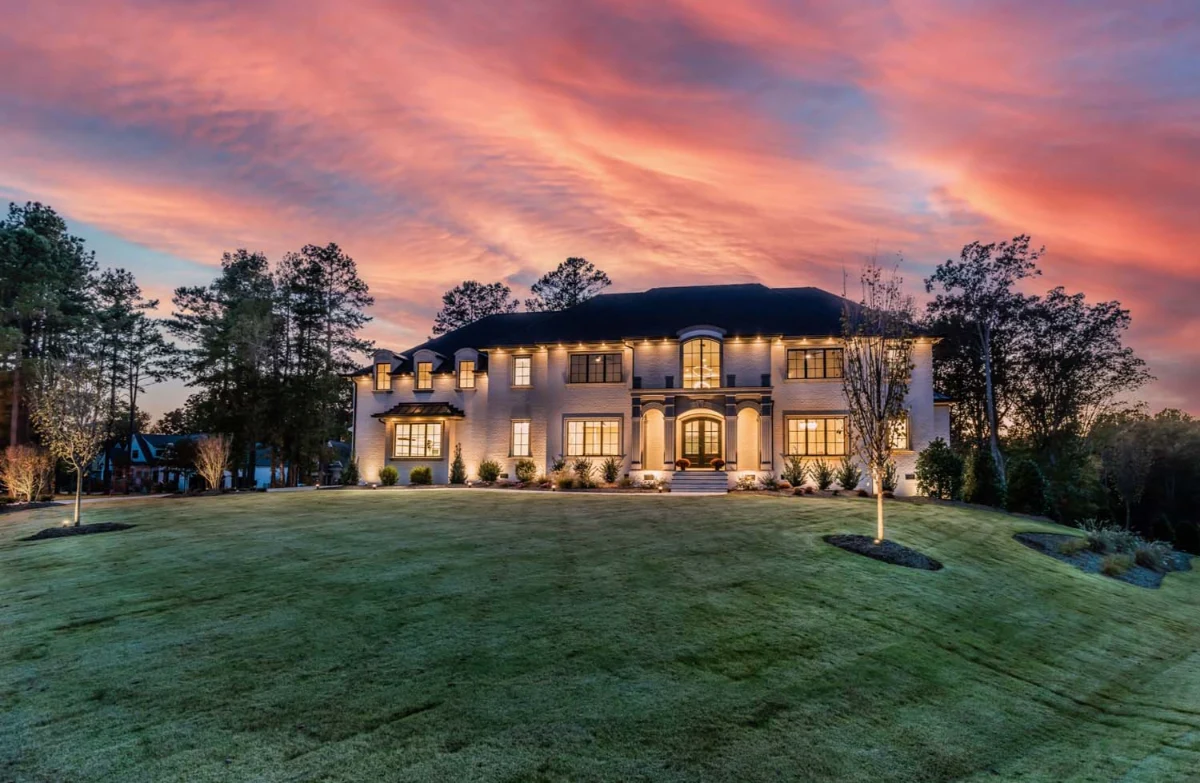Your home should reflect what matters most to you, and if you’re thinking about going greener, you’re not alone. More families are choosing eco-friendly renovations that cut energy costs, create healthier spaces, and make homes more efficient for the long haul.
At Hafsa Building Group, we’ve seen firsthand how small, smart changes can add up to a big difference. Since 2017, our team, led by founder Rami Hafsa, has helped homeowners build spaces that match their values and their lifestyle.
Key Takeaways
- Sustainable renovations use safer materials, save energy, and reduce waste.
- Small upgrades like LED lighting and insulation can lower utility bills fast.
- Choosing the right materials and smart tech makes your home healthier and more efficient.
- Planning ahead and avoiding common mistakes keeps your remodel/build on budget.
What Are Sustainable Improvements?
Sustainable improvements are upgrades that reduce waste, save energy, and use safer materials. They make your home more efficient, healthier to live in, and better for the environment.This includes things like reclaimed wood, low-VOC paint, solar panels, better insulation, and energy-saving appliances.
According to the National Insulation Association, properly sealing and insulating a home can reduce energy use by 10% to 45%. That’s a huge impact from just one smart upgrade, proof that small changes can lead to major savings.
Why Sustainable Improvements Are Worth It
Here’s how sustainable and eco-friendly upgrades can improve a home:
Lower Energy and Utility Costs
Insulation, smart thermostats, LED lighting, and energy-efficient appliances reduce power and heating bills. As reported by ENERGY STAR, smart thermostats alone can lower heating and cooling costs by about 8%, or $50 per year.
Healthier Indoor Air
Low-VOC paints, non-toxic flooring, and natural insulation cut down on indoor air pollution. That means fewer allergens, less irritation, and a safer space, especially for kids.
Less Waste, Smaller Footprint
Using reclaimed materials, water-saving fixtures, and renewable energy reduces landfill waste and lowers your home’s carbon output. Every upgrade helps.
Top 10 Eco-Friendly Upgrade Ideas for Modern Homes
These upgrades are simple, effective, and proven to reduce energy use, waste, and indoor toxins.
1. Reclaimed Wood for Floors and Accents
Reclaimed wood gives new life to old materials. It saves trees, adds character, and avoids the energy used in manufacturing new products.
2. Energy-Efficient Appliances
Switch to Energy Star-rated appliances. They use less electricity and water without sacrificing performance, cutting bills and emissions.
3. Natural Insulation
Wool, cotton, and cellulose insulate well and don’t release harmful chemicals. They’re safer to install and better for indoor air quality.
4. Solar Panels
Solar systems reduce your reliance on the grid and can eliminate your electric bill. Incentives and rebates often make them more affordable than expected.
5. Low-VOC Paint
Regular paints release fumes that linger for months. Low-VOC options look the same, but keep your air clean and lungs safe.
6. LED and Smart Lighting
LED bulbs use up to 90% less energy and last longer. Smart switches and timers help avoid wasted electricity.
7. Maximize Natural Light
Add skylights or larger windows where possible. Bright rooms feel better and reduce the need for artificial lighting.
8. Water-Saving Fixtures
Install low-flow toilets, showerheads, and faucets. These reduce water bills and help during drought conditions without changing your habits.
9. Bamboo or Cork Flooring
Both grow fast and regenerate quickly. They’re durable, attractive, and easier on the planet than hardwoods.
10. Repurpose What You Can
Before tossing old cabinets, doors, or fixtures, ask if they can be refinished or reused. It saves money and keeps useful materials out of landfills.
5 Steps to Plan a Sustainable Custom Home Build

Building a new home is the perfect time to make sustainable choices. With the right plan, you can design a space that’s healthier, more efficient, and built to last.
Step 1: Define Your Priorities and Set a Realistic Budget
Decide what sustainability means for you, lower energy use, non-toxic materials, minimal environmental impact, and how much you’re ready to invest. Focus on high-impact areas like insulation, HVAC systems, and orientation for natural light.
Step 2: Design With Efficiency in Mind
Work with your architect to design a home that uses space wisely, captures sunlight, and supports passive heating and cooling. Efficient layouts reduce wasted materials and long-term utility costs.
Step 3: Choose the Right Builder and Ask the Right Questions
Not every builder is familiar with eco-friendly construction. Ask about their experience with Energy Star homes, solar-ready designs, and sustainable certifications like LEED or National Green Building Standard.
Step 4: Source Smart, Local, and Eco-Friendly Materials
Choose materials that are recycled, responsibly sourced, or made locally. Products like reclaimed wood, low-VOC paint, and sustainably harvested flooring reduce emissions and support healthier living.
Step 5: Plan for Long-Term Performance
Build with systems that help you track efficiency, like energy monitors, smart thermostats, or solar setups. These tools help you understand your home’s performance from day one and make informed upgrades later.
Sustainable Materials Comparison
Not all eco-friendly materials are created equal. Some save more energy, some last longer, and some just cost more than they should. Use this comparison to choose smart.
| Material | Initial Cost | Lifespan | Eco Rating | Maintenance |
| Reclaimed Wood | Medium | 50+ years | High | Low |
| Bamboo Flooring | Low–Medium | 20–25 years | High | Moderate |
| Cork Flooring | Medium | 25–30 years | High | Moderate |
| Low-VOC Paint | Low | 5–10 years | High | Low |
| Cellulose Insulation | Low | 20–30 years | High | Low |
| Solar Panels | High | 25–30 years | Very High | Low |
| LED Lighting | Low | 10–25 years | Very High | Very Low |
Smart Home Tech That Supports Sustainability

Smart home devices can cut waste, save energy, and make your home more efficient without extra effort.
Smart Thermostats
These learn your habits and adjust heating or cooling automatically. You don’t have to remember to turn things off since they’ll do it for you. Brands like Nest and Ecobee can cut heating and cooling costs by up to 20%.
Zoned Heating and Cooling
Control the temperature room by room instead of heating the whole house. Less energy is wasted, and everyone gets the comfort level they want.
Smart Lighting
Set timers or control lights from your phone. Motion sensors turn lights off when rooms are empty. Combine these with LEDs to get the full energy-saving effect.
Water Leak Sensors and Flow Monitors
These track usage and catch leaks early, saving water and preventing damage. Some models even shut off water automatically if a problem is detected.
Energy Monitoring Systems
See real-time energy use from your phone. These systems spot which appliances are eating power and help you to adjust your habits to save money.
5 Mistakes to Avoid on Your Eco Journey
Going green doesn’t mean going blindly. These common mistakes waste money, time, and good intentions.
1. Chasing Trends Over Function
Some “eco” products look stylish but don’t actually save energy or reduce impact. Focus on what works, not what’s trending. Function should come first.
2. Falling for Greenwashing
Just because something says “eco-friendly” doesn’t mean it is. Look for certifications like Energy Star, GREENGUARD, or FSC instead of vague marketing claims.
3. Ignoring Indoor Air Quality
Energy savings are great, but not at the cost of breathing in chemicals. Always consider what’s going into your walls, floors, and air.
4. Overbuilding or Overbuying
More isn’t always better. Stick to what you actually need. Oversized systems and excess materials waste resources and money.
5. Skipping the Audit
Without checking where your home is leaking energy or water, you’re guessing. Start with a basic audit, even a DIY one, so you upgrade where it matters most.
Ready to Build Smarter?
Eco-friendly renovations are a smart way to invest in your home, your health, and your future. At Hafsa Building Group, we bring craftsmanship, clarity, and care to every step of your remodel or build
When you’re ready to bring your vision to life, start by reaching out through our contact page. Let’s build something better, together.






